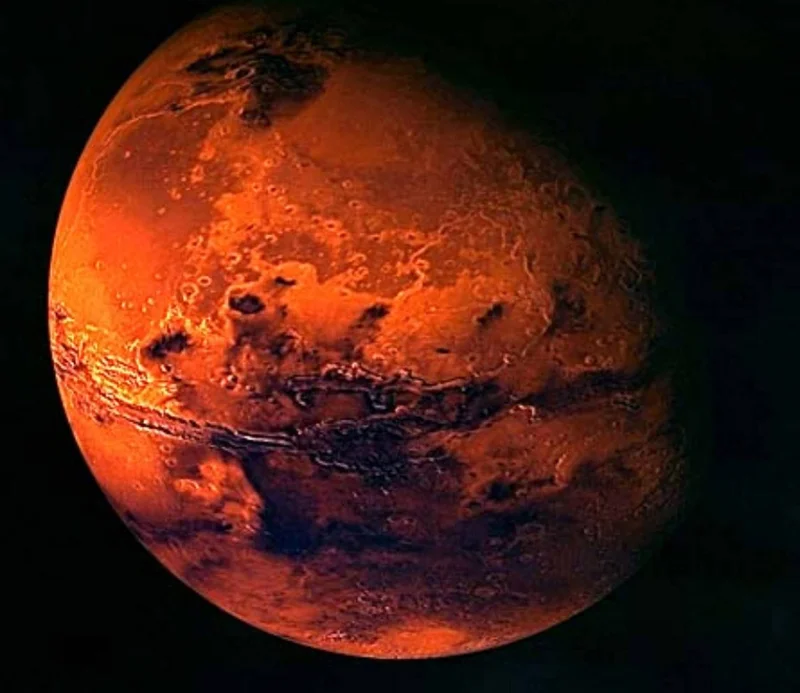Mars Habitable Zone: NASA's Struggles vs. Life on Mars
Generated Title: Perseverance Rover's Midlife Crisis: Is NASA's Mars Gamble Paying Off?
Okay, let's talk about Mars. Specifically, NASA's Perseverance rover, which is currently four years into its mission. The PR is relentless: discoveries of "strange, shiny rocks" [Source 1], potential for past life [Source 2], and all the usual space-exploration buzzwords. But let's run the numbers; is this actually worth it?
The initial price tag for Perseverance was $2.7 billion [Source 1]. That's a hefty chunk of change, even for NASA. Add to that the ongoing operational costs, and you're looking at a significant investment. The rover's primary mission is to search for signs of ancient microbial life and collect samples for future return to Earth. But here's where the narrative starts to get a bit shaky.
Perseverance has found a weird rock, "Phippsaksla," with high levels of iron and nickel [Source 1]. NASA is tentatively calling it a meteorite. Okay, cool. Previous rovers—Curiosity, Opportunity, and Spirit—already found meteorites. So, Perseverance is just joining the club, four years later. Is this a groundbreaking discovery or a cosmic participation trophy? I will let you decide.
Then there's the Mars Sample Return (MSR) mission, which is supposed to bring those carefully collected rock samples back to Earth. This is where things get messy. The Trump administration (back in May 2025, according to the article) proposed scrapping the MSR [Source 2], calling it "financially unstable." An independent review estimated the program could cost $11 billion – that's $5 billion more than intended – and be delayed until 2040 [Source 2]. It's hard to imagine a worse ROI.

The problem, as always, is priorities. Is the potential to find evidence of past life on Mars worth tens of billions of dollars? Especially when we have plenty of problems to solve here on Earth? The scientific community is “nearly unanimous” about the mission being a top priority, but as a data analyst, I prefer to see cost-benefit analysis. I get the appeal of the unknown, but I think there are better ways to spend that money.
And this is the part of the report that I find genuinely puzzling. We know that Mars was once warm and wet, with lakes and seas on its surface [Source 3]. But we don't know if life ever took hold there. Perseverance is supposed to help us answer that question. But even if it does find evidence of past life, what does that really tell us? That life can exist on other planets? We already suspected that. That we are not alone? Well, that's a much bigger question than a rock sample can answer.
There's also the terraforming angle. Can we use microbial life to transform Mars into a habitable planet [Source 4]? Scientists are experimenting with extremophiles—organisms that can survive in extreme conditions—to see if they can help with things like oxygen production and carbon fixation. Deinococcus radiodurans, for example, is incredibly resistant to radiation [Source 4]. Cyanobacteria can fix carbon and nitrogen [Source 4]. But even if we can find organisms that can survive on Mars, that's a far cry from creating a sustainable ecosystem.
Even if we do find evidence of past life or develop the technology to terraform Mars, is it ethical to colonize another planet? Are we just going to repeat the mistakes we've made on Earth? These are the questions we should be asking, not just how many shiny rocks we can find.
Is This Just a Very Expensive Photo Op?
Perseverance is doing what it was designed to do: exploring Mars, collecting samples, and sending back data. But the bigger question is whether that data is worth the cost. The MSR mission is in jeopardy, the scientific benefits are uncertain, and the ethical implications are largely ignored. NASA needs to show us the numbers—a clear, data-driven justification for this Mars gamble. Otherwise, it just looks like a very expensive photo op.
-

Warren Buffett's OXY Stock Play: The Latest Drama, Buffett's Angle, and Why You Shouldn't Believe the Hype
Solet'sgetthisstraight.Occide...
-

The Great Up-Leveling: What's Happening Now and How We Step Up
Haveyoueverfeltlikeyou'redri...
-

The Business of Plasma Donation: How the Process Works and Who the Key Players Are
Theterm"plasma"suffersfromas...
-

NJ's ANCHOR Program: A Blueprint for Tax Relief, Your 2024 Payment, and What Comes Next
NewJersey'sANCHORProgramIsn't...
-

The Future of Auto Parts: How to Find Any Part Instantly and What Comes Next
Walkintoany`autoparts`store—a...
- Search
- Recently Published
-
- XRP: Unpacking the Latest Data and Its Transformative Potential
- LLY Stock: What's Really Moving the Price Today?
- McKinsey: AI Reports, Consulting, and What It All Means
- Nebius Group: Unpacking the AI Hype and the Millionaire Potential
- Sirius XM: Ted Cruz, Metal Songs, and Andy Cohen – What's the Frequency?
- Blockchain: What is it, the Latest News, and the Impact?
- The Future: Meaning and Definition
- Tensor: What it is and why AI cares
- Ethereum's Quantum Leap: Price, News, and the Future of Crypto Security
- Mars Habitable Zone: NASA's Struggles vs. Life on Mars
- Tag list
-
- carbon trading (2)
- Blockchain (11)
- Decentralization (5)
- Smart Contracts (4)
- Cryptocurrency (26)
- DeFi (5)
- Bitcoin (29)
- Trump (5)
- Ethereum (8)
- Pudgy Penguins (5)
- NFT (5)
- Solana (5)
- cryptocurrency (6)
- XRP (3)
- Airdrop (3)
- MicroStrategy (3)
- Stablecoin (3)
- Digital Assets (3)
- PENGU (3)
- Plasma (5)
- Zcash (5)
- Aster (4)
- investment advisor (4)
- crypto exchange binance (3)
- SX Network (3)
